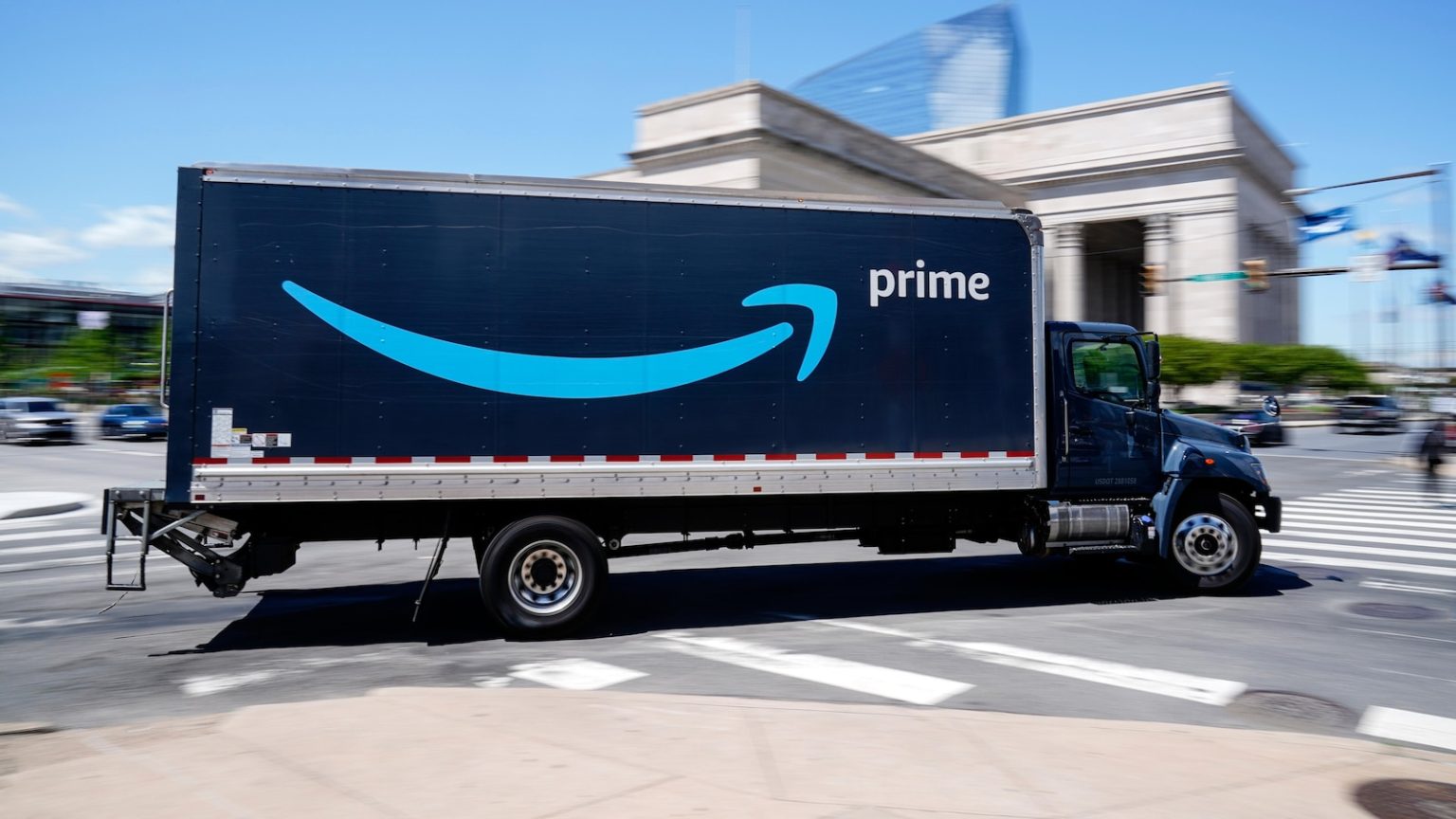Amazon’s Strong Holiday Performance and Future Outlook: A Detailed Breakdown
Amazon’s Impressive Q4 Results and the Stock Market Reaction
Amazon kicked off 2024 with a bang, delivering an impressive performance for the fourth quarter of 2023. The Seattle-based tech and e-commerce giant reported a revenue of $187.8 billion for the October-December period, marking a 10% increase compared to the same period in 2023. This surpasses the expectations of many analysts, showcasing the company’s ability to capitalize on the holiday shopping season. Additionally, Amazon’s profits reached $20 billion, with earnings per share (EPS) of $1.86, outperforming the anticipated $1.49 EPS projected by analysts polled by FactSet. These strong financials highlight Amazon’s continued dominance in the e-commerce and technology sectors, further solidifying its position as a leader in the industry.
However, despite these impressive numbers, Amazon’s stock dipped in after-hours trading following the earnings report. This reaction was largely driven by the company’s guidance for the current quarter, which fell short of analyst expectations. Amazon projected revenue for the first quarter of 2024 to be between $151 billion and $155.5 billion, which is lower than the $158.56 billion forecast by analysts. The company cited an "unusually large, unfavorable impact" from foreign exchange rates as a primary reason for this conservative outlook. This guidance has raised some concerns among investors about Amazon’s near-term growth prospects, despite its strong holiday performance.
The Holiday Shopping Boom and Amazon’s Role in the Retail Landscape
Amazon’s success during the holiday season is a testament to its ability to attract and retain consumers during peak shopping periods. The company’s online shopping business generated $75.5 billion in revenue during the fourth quarter, reflecting a 7% increase from the same period in 2023. This growth underscores Amazon’s strategic efforts to kickstart holiday shopping early, including promotions and discounts that began in October. The company’s ability to leverage major sales events like Black Friday and Cyber Monday further contributed to its strong performance, making it the go-to online shopping destination for millions of consumers.
The retail industry as a whole saw better-than-expected holiday sales in November and December, according to data from the National Retail Federation. Lower inflation on holiday goods played a significant role in enticing shoppers to spend more, both online and in-store. Online shopping, in particular, reached record levels, with Adobe Analytics reporting historic sales figures for the period. Amazon, as the biggest online shopping destination in the U.S., was a major beneficiary of this trend, further cementing its status as a retail powerhouse.
Amazon Web Services (AWS) and the Cloud Computing Race
Amazon’s cloud computing division, Amazon Web Services (AWS), continued to be a key driver of the company’s success in the fourth quarter. AWS revenue rose by 19% during the period, although it fell slightly short of analyst expectations. Despite this minor miss, AWS remains a critical component of Amazon’s business, providing not only a significant portion of its revenue but also a high-margin stream that contributes heavily to its profitability.
Amazon is also making aggressive investments in artificial intelligence (AI), a rapidly evolving field that is reshaping industries across the board. The company has been ramping up its spending on data centers that support AI and cloud computing, as well as on advanced computer chips, including its own designs and those developed by Nvidia. These investments are part of a broader strategy to integrate AI into various aspects of its business, from improving operational efficiency to enhancing customer experiences. During a call with analysts, Amazon CEO Andy Jassy emphasized the transformative potential of AI, stating, "We think virtually every application that we know of today is going to be re-invented with AI inside of it."
The AI Race and Global Competition
Amazon’s focus on AI is not just about maintaining its competitive edge but also about staying ahead in a rapidly changing technological landscape. The company is spending billions of dollars to expand its data centers and develop AI models that can be integrated into its various business units. During the fourth quarter, Amazon reported capital expenditures of $26.3 billion, with the majority allocated to AI and AWS. This level of investment underscores the company’s commitment to leading in the AI space, as well as its confidence in the long-term returns such investments will generate.
Moreover, Amazon has taken notice of the advancements being made by other players in the AI space, including DeepSeek, a Chinese artificial intelligence company whose chatbot recently became the most downloaded app in the U.S. Jassy acknowledged the impressive progress made by DeepSeek, highlighting the global nature of the AI race. This recognition serves as a reminder that the competition in AI is not just between U.S. tech giants but also involves emerging players from around the world, particularly from China.
The Impact of New Tariffs on Amazon and the Retail Industry
Amazon’s quarterly report coincides with significant changes in the global trade landscape, particularly the new 10% tariff imposed by President Donald Trump on Chinese imports. This tariff, which came into effect on Tuesday, could have far-reaching implications for Amazon and the broader retail industry. While the tariffs on Canadian and Mexican imports have been temporarily suspended for about a month, the impact on Chinese imports is expected to be more pronounced.
For Amazon, the tariffs present a mixed bag of opportunities and challenges. On the one hand, the increased costs for competitors, particularly those reliant on Chinese imports, could give Amazon a relative advantage in the market. On the other hand, the tariffs could directly impact Chinese sellers who use Amazon’s platform to reach American consumers. This could lead to higher prices for consumers and reduced sales for these sellers, potentially dampening the overall growth of Amazon’s marketplace.
Additionally, the tariffs could also affect Amazon’s newly launched online storefront, Amazon Haul, which is designed to ship low-cost products directly from China. This initiative, aimed at competing with fast-fashion retailers like Shein and Temu, could face increased costs due to the tariffs, making it more challenging for Amazon to maintain its competitive pricing. Furthermore, analysts from Morgan Stanley have pointed out that Amazon’s first-party retail business, which sells products purchased directly from manufacturers, has the highest exposure to the tariffs. They estimate that 25% of the merchandise sold through this business comes from China, making it particularly vulnerable to the new trade restrictions.
The Road Ahead: Challenges and Opportunities for Amazon
As Amazon navigates the complexities of the ever-evolving retail and technology landscapes, the company faces both challenges and opportunities in the coming months. The new tariffs on Chinese imports present a significant challenge, particularly for Amazon’s first-party retail business and its Chinese sellers. However, they also offer an opportunity for Amazon to further differentiate itself from competitors by leveraging its diversified supply chain and strong financial position.
Amazon’s heavy investments in AI and cloud computing are strategic moves aimed at future-proofing the company. While these investments may require significant upfront spending, they position Amazon to be a leader in the emerging AI-driven economy. The integration of generative AI into various aspects of Amazon’s business, from customer service to logistics, has the potential to drive innovation and efficiency, creating long-term value for shareholders.
Moreover, Amazon’s ability to adapt to changing consumer behaviors and preferences will be crucial in maintaining its competitive edge. The company’s focus on early holiday promotions and its ability to capitalize on major sales events like Black Friday and Cyber Monday demonstrate its commitment to meeting the evolving needs of its customers. As the retail industry continues to shift towards online shopping, Amazon is well-positioned to remain a dominant player.
Conclusion: Amazon’s Strengths and Future Prospects
In conclusion, Amazon’s fourth-quarter performance was a testament to its strength and resilience as a leader in the e-commerce and technology sectors. Despite the challenges posed by the new tariffs and the competitive landscape, Amazon continues to demonstrate its ability to adapt and innovate. The company’s investments in AI and cloud computing, coupled with its strategic approach to the holiday shopping season, position it well for long-term growth.
However, the road ahead is not without its challenges. The impact of the new tariffs, the intensifying competition in the AI space, and the evolving nature of consumer behavior are all factors that Amazon will need to navigate carefully. Nevertheless, Amazon’s strong financial position, diversified business model, and commitment to innovation provide a solid foundation for overcoming these challenges and capitalizing on future opportunities.
As the retail and technology industries continue to evolve, Amazon’s ability to stay ahead of the curve will be essential. With its sights set on the future, Amazon is well-positioned to remain a dominant force in the years to come, delivering value to its customers, shareholders, and the broader market.















